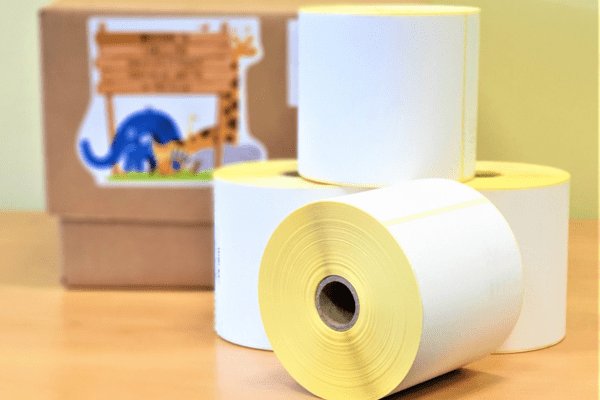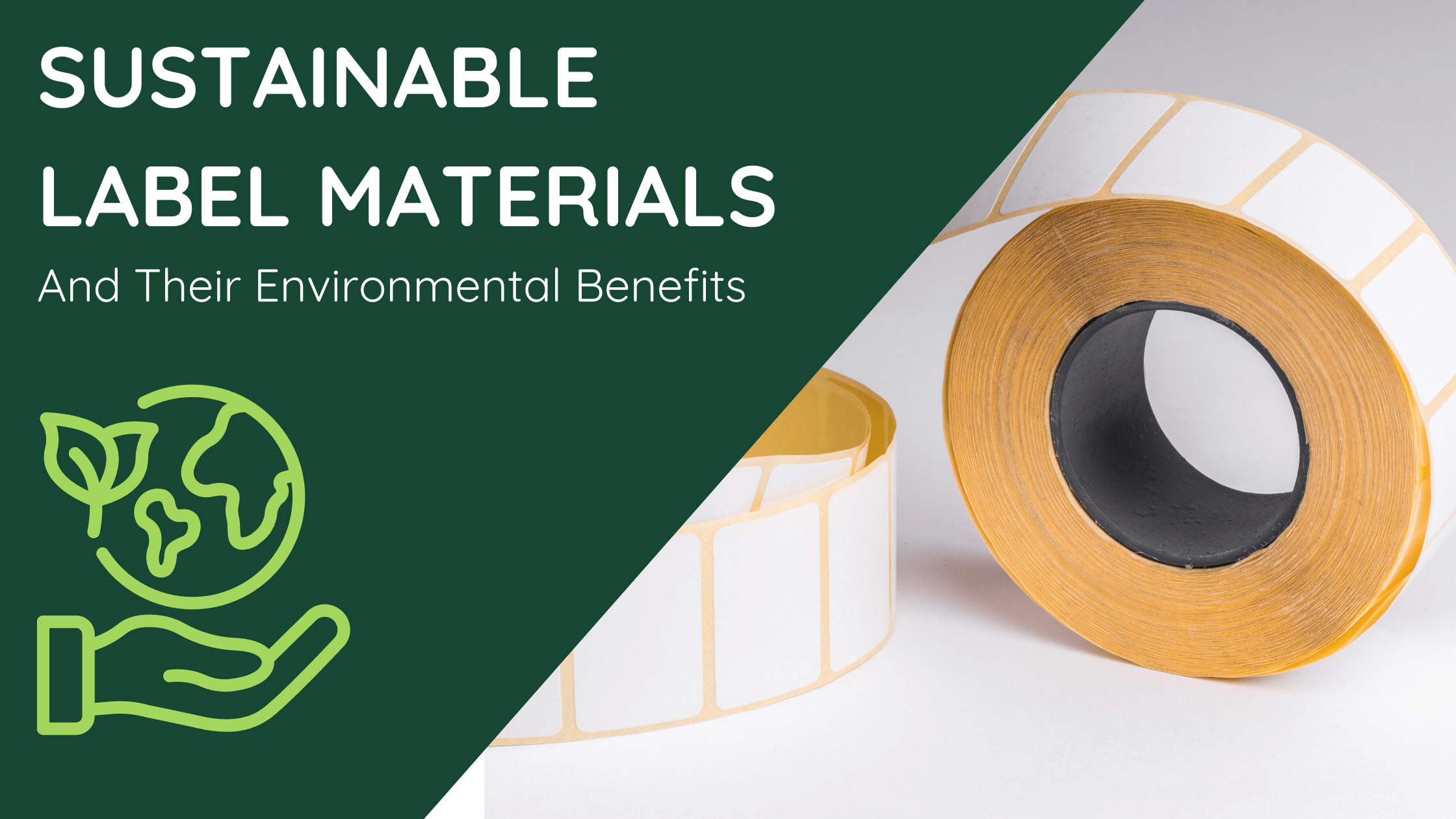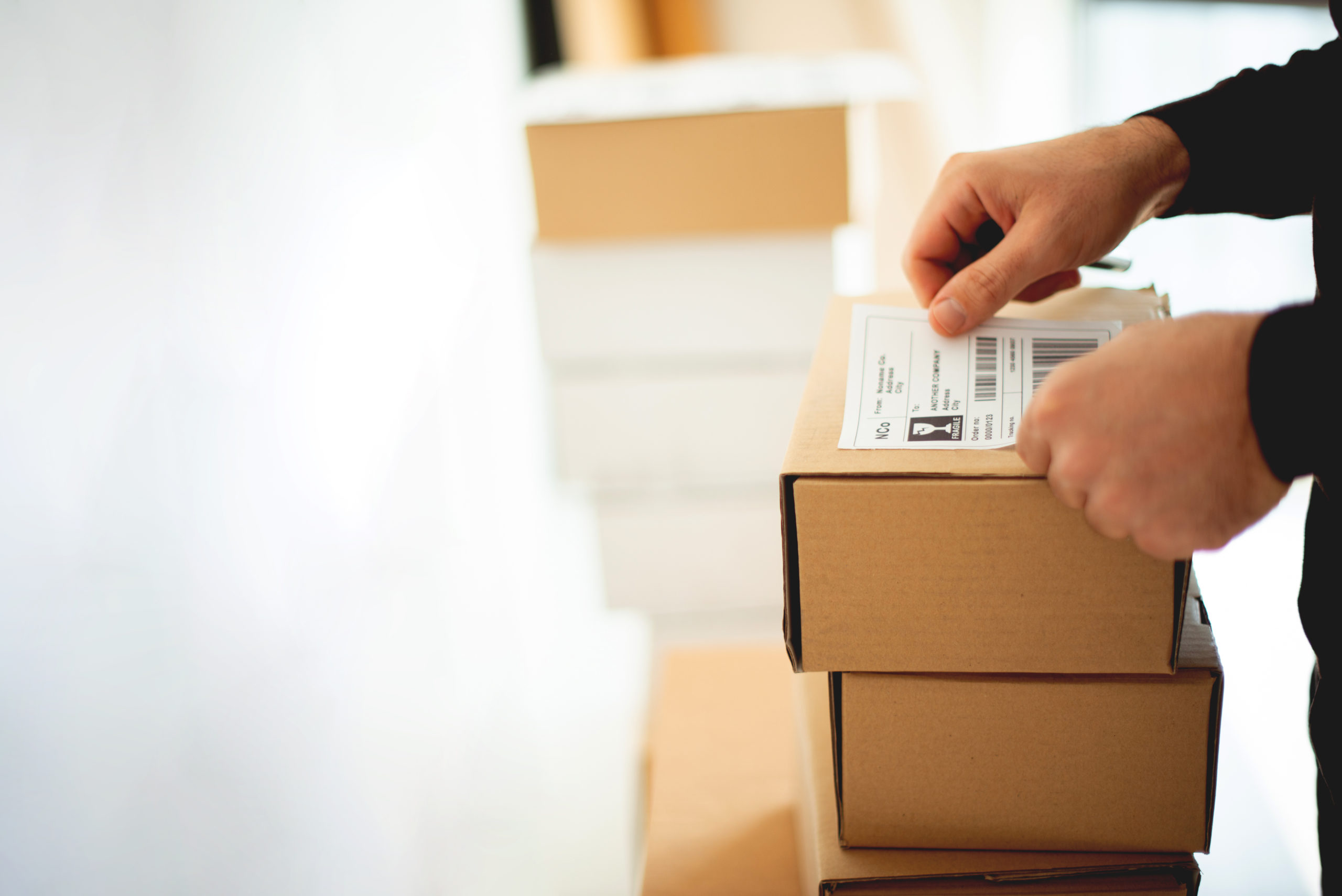Thermal label printers use heat to create to an image. There are two main types of thermal printing techniques: direct thermal and thermal transfer.
Direct Thermal
The label surface is coated with a heat reactive layer which turns black when in contact with the heat from the print head. This heat reactive surface will effectively cause the print to fade when exposed to sunlight, strong artificial light or indeed friction (cartons rubbing together in transit for instance) with the speed of fading dependent upon the intensity of the light or friction. For this reason, direct thermal labels tend to be used for short shelf life products such as fresh food. Although there are no ribbon costs associated with direct thermal labels, there are other cost implications as without the ribbon acting as a protective insulator between the print head and the label, the print head will wear more quickly requiring more frequent replacement.
Direct thermal synthetics are a good choice for carton and retail pack labeling in the chilled and frozen food sectors where the labels are exposed to high levels of moisture and rough handling during transportation
Advantages:
- Simple to use; a ribbon is not required as it images directly onto the label
- Used in most printers
- Cost effective
- Greater productivity due to no ribbon changeovers
- Clear and consistent images for good readability and ‘scannability’
- Suitable for both 1D and 2D barcodes
- Paper and synthetic material options available
- The quality, stability and durability of the image is suitable for most common requirements
Disadvantages:
- Can fade over time (6-12 months)
- Overexposure to heat or UV light discolours the material, making the print harder to read
- Limited abrasion resistance
Thermal Transfer
The labels are printed through a thermal transfer printer where, at the point of the print head, a layer of ribbon is placed on top of the label. The print head elements heat up and cause the carbon pigment that is on the ribbon to transfer to the label, creating the required image.
Thermal transfer paper labels are a good choice where direct thermal is not suitable or the print quality of the ribbon is preferred.
Thermal transfer synthetic labels are more durable so are better suited for long-life applications such as outdoor labeling, or applications where high levels of moisture or scuffing are expected.
Advantages:
- Excellent print definition for text, images and barcodes
- Ideal for small characters and line work
- Suitable for both 1D and 2D barcodes
- Wide variety of paper and synthetic materials available including clear, pearl, metallic, and fluorescent
- Coloured ribbons available for branding and promotional uses
- Better resistance to heat, moisture and chemicals
- Stable and durable images that are long-lasting
- Higher speed printing
- Longer print head life
Disadvantages:
- Not all printers are thermal transfer compatible
- Ribbons must be kept in stock are an additional cost; a ribbon saver can reduce the amount of ribbon used
- Requires additional setup time and ribbon changeovers
- Ribbons can wrinkle and compromise print quality
Label Construction
All four components of the label are important in their own right, however, the face stock, tends to require the most immediate consideration as it is the surface on which you are actually printing. Does the label need a topcoat or protective coating? This topcoat is used to protect the print job from various types of environmental conditions. There are two main types of coating:
Varnish – This is what you would use when you want to have a protective gloss applied to the face stock.
Laminate –This type of topcoat is generally used when a label will come into contact with chemicals or if the label needs to be protected against abrasion.
Another major component is the type of material on which you will need to print to complete the job. There are various types of material and films from which to choose; choosing the correct one is what will separate a successful printing job from an unsuccessful one. Let’s take a look at the most commonly used types of face stock:
Paper is the type of label most typically used. It is made from natural wood or pulp.
Film is generally made from a synthetic or plastic material. For the most part, these types of labels can be utilized for decals, beverage identification or whenever moisture resistance is needed.
Foil is made from aluminium or alloys and is great when needing to label a rigid or semi-squeezable container.
Static Cling labels are vinyl face stocks that are used for most smooth surfaces such as glass, and painted metal.
Magnets are made with paper or film on the uppermost layer with a bendable magnet as the bottom layer.
Holograms are micro embossed metallic film, that is intended to be more eye-catching
So which type of Thermal Label should I use?
Given the advantages and disadvantages of both types of thermal label, your primary consideration should be the type of application for which the label is intended. Here’s a quick guide to help you to select the appropriate thermal label for your print job:
That’s the Badger!
- Box Quantity – 12 rolls per box
- Label size : 4” x 6”
- Perforation every label
- 475 per roll on 25mm cores
One of the newest additions to the zoo, the Badger LZ101 is our Direct Thermal Eco Perm paper label with general purpose permanent adhesive.
Suitable for Zebra printers as well as a variety of other printers, these versatile and cost-effective labels are useful for easily printing addresses, shipping labels, and 2D barcodes for Royal Mail. A favourite of online retailers and couriers, these thermal labels will stick reliably to various packaging surfaces, including cardboard boxes, to ensure your important information stays intact.
Still Unsure? Let us help
At Labels Zoo, we produce labels for a wide variety of clients across multiple industries. Our Zoo Keepers are market leading experts when it comes to all things label. Whether you need more information about thermal labels or would like to discuss any of the products in our extensive range, we’re here to help.
Call us on 0800 707 6567 or send us a message
In an era marked by growing environmental awareness and sustainability concerns, businesses are increasingly turning to eco-friendly solutions to minimize their carbon footprint and contribute to a greener future. Thermal labels offer a significant opportunity for brands to make a positive impact by opting for sustainable materials. Let’s delve into…
In today’s competitive marketplace, where brands are vying for consumer attention, packaging plays a pivotal role in shaping brand perception and influencing customer experience. Within the realm of packaging, labels serve as the face of the product, conveying vital information and communicating brand identity. Let’s explore the profound impact of…
In the dynamic world of e-commerce, where products vie for attention amidst a sea of offerings, effective labelling strategies are paramount for maximising sales and capturing consumer interest. Labels serve as virtual ambassadors for your products, conveying essential information and enticing customers to make purchasing decisions. At Labels Zoo, we…




